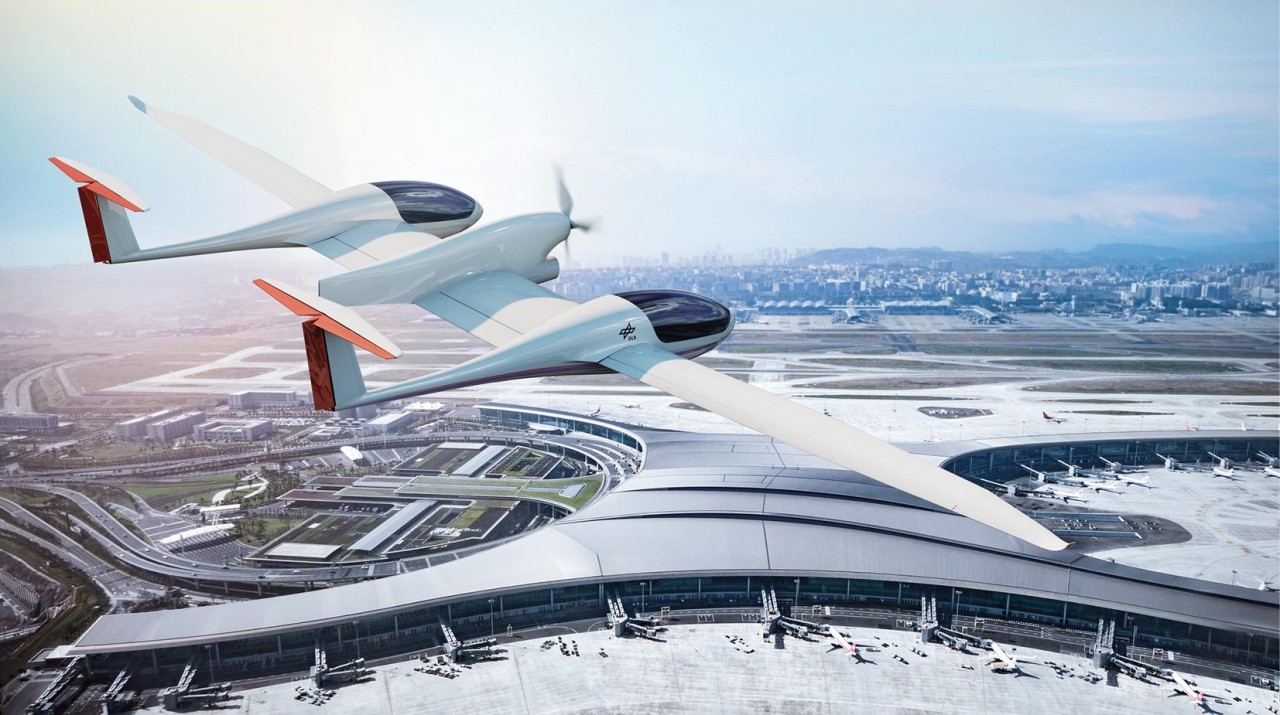
Hy4: Four-Seater Aircraft Powered by Hydrogen Fuel Cells
The #aviation industry has been under pressure to reduce its carbon footprint and embrace more sustainable solutions. One of the most promising solutions is hydrogen power, which is why the #Hy4 has generated so much excitement. The world’s first hydrogen fuel cell-powered four-seat passenger aircraft, the #Hy4, achieved a significant milestone as it completed its inaugural flight at Stuttgart Airport in September 2016.

The photograph is the Hy4 aircraft following its inaugural flight in 2016. In the photograph, from the third person to the left, Georg Fundel, André Thess, ivo Boscarol, and Prof. Dr.-Ing. Josef Kallo, the Founder and CEO of H2FLY ₍₁₎.
What is the Hy4?
The Hy4 is a small, four-seater aircraft. This aircraft has a #twinFuselage design based on Pipistrel Aircraft Taurus G4. An integrated mid-wing section connects the two fuselages, which have space for two passengers each. By using a twin fuselage design, it is possible to achieve an optimal distribution of the drives components and a greater capacity for total load.The Hy4 powertrain components include a low-temperature #hydrogenfuelcell, a battery, and a #hydrogenstoragesystem. Two carbon-fibre tanks located in each fuselage store hydrogen fuel at 4,300 and 5,800 psi. #Hydrogen is converted directly into electrical energy by the fuel cell, with water as the only waste product. If hydrogen for the fuel cell is generated by electrolysis using #renewableenergy sources, the aircraft will be emission-free ₍₄₎.
The Hy4 has a wingspan of 21.36 meters and a length of 7.4 meters. It has an empty weight of approximately 630 kilograms, excluding the fuel cell, battery, and storage system. Hy4 has a maximum weight of 1500 kilograms. The power module, which includes the fuel tank, weighs around 400 kilograms. The engine has 80 kW output.The fuel cell and battery together provide a continuous output of 45 kW each, totaling 90 kW. The aircraft's battery has a capacity of approximately 21 kWh at 1°C. The maximum speed of the Hy4 is around 200 km/h, with a cruising speed of 145 km/h and an engine output of 26 kW when cruising at 140 km/h. The range of the aircraft varies from 750 to 1500 km ₍₃₎.

Why is the Hy4 so significant?
The Hy4 represents a significant step forward in the aviation industry's quest for sustainability. It produces zero emissions due to hydrogen fuel cells, making it an attractive option for airlines and governments.
Furthermore, the Hy4 is significantly quieter than traditional aircraft, making it an attractive option for airports located in residential areas, where noise pollution is a major concern.
In addition to its environmental benefits, the Hy4 has the potential to be more cost-effective than traditional aircraft in the long run because it is believed that Hydrogen fuel cells require less maintenance ₍₆₎. Thus, the Hy4 can provide significant cost savings over its lifetime.
What are the challenges of hydrogen-powered aircraft?
While hydrogen power is a promising solution for the aviation industry, there are still some challenges that need to be addressed before it can be widely adopted. One of the biggest challenges is the lack of infrastructure. The production, storage, and distribution of hydrogen are still in their early stages, which means that there are limited refueling options for hydrogen-powered aircraft.
Moreover, hydrogen is a highly flammable gas, which requires special handling and safety measures.
The infrastructure needed to support hydrogen fuel cells is also expensive, which means that it may take some time before it becomes a cost-effective option for the aviation industry.
The Hy4 and H2FLY
H2FLY has established itself as a leader in the development and advancement of hydrogen-electric propulsion systems for aircraft. The successful completion of Hy4 first flight in 2016 demonstrates the feasibility and potential of hydrogen-electric propulsion systems for aircraft. Hydrogen-electric aircraft may be able to transport up to 40 passengers over 2,000 kilometers in the future ₍₈₎. The Hy4, is expected to return to the skies in 2023 after being converted from gaseous hydrogen to the cryogenic alternative developed by H2FLY ₍₉₎.

The Hy4 represents a significant step forward in the aviation industry's quest for sustainability. Its use of hydrogen fuel cells offers zero emissions and potential cost savings over traditional aircraft. However, challenges such as the lack of infrastructure for hydrogen and the need for special handling and safety measures still need to be addressed. As the industry continues to work towards reducing its carbon footprint, hydrogen power remains one of the most promising solutions, and the Hy4 is leading the way towards a more sustainable future.
ENDNOTES
- https://www.dlr.de/content/en/images/2016/3/hy4-aircraft-after-its-first-flight_24484.html
- https://www.dlr.de/content/en/images/dosiers/electric-flight/hy4-airport-dossier-e-flight.html
- https://www.dlr.de/tt/en/desktopdefault.aspx/tabid-10743/
- https://www.aerospace-technology.com/projects/hy4-aircraft/
- https://www.dlr.de/content/en/images/dosiers/electric-flight/flying-with-hydrogen-dossier-e-flight.html
- https://digital-library.theiet.org/content/journals/10.1049/esej_20020601
- https://www.dlr.de/content/en/images/2017/4/the-hy4-fuel-cell-propulsion-system_28734.html
- https://www.aero-expo.com/h2fly-sets-hydrogen-electric-flight-world-record
- https://www.flightglobal.com/aerospace/h2fly-eyes-summer-flight-test-campaign-for-new-liquid-hydrogen-fuel-cell-system/151930.article
Regional Manager @ QantasLink | Master of Engineering Management
1yInterested in the pros and cons - electric/hydrogen powered vs hydrogen combustion. Also oxygen is also highly volatile but we manage containment here in Australia, in all our airports. A different story plays out in South Korean (and other) airports where oxygen servicing is not permitted. How would we manage these nuances with H? - I’m still thinking 🤔